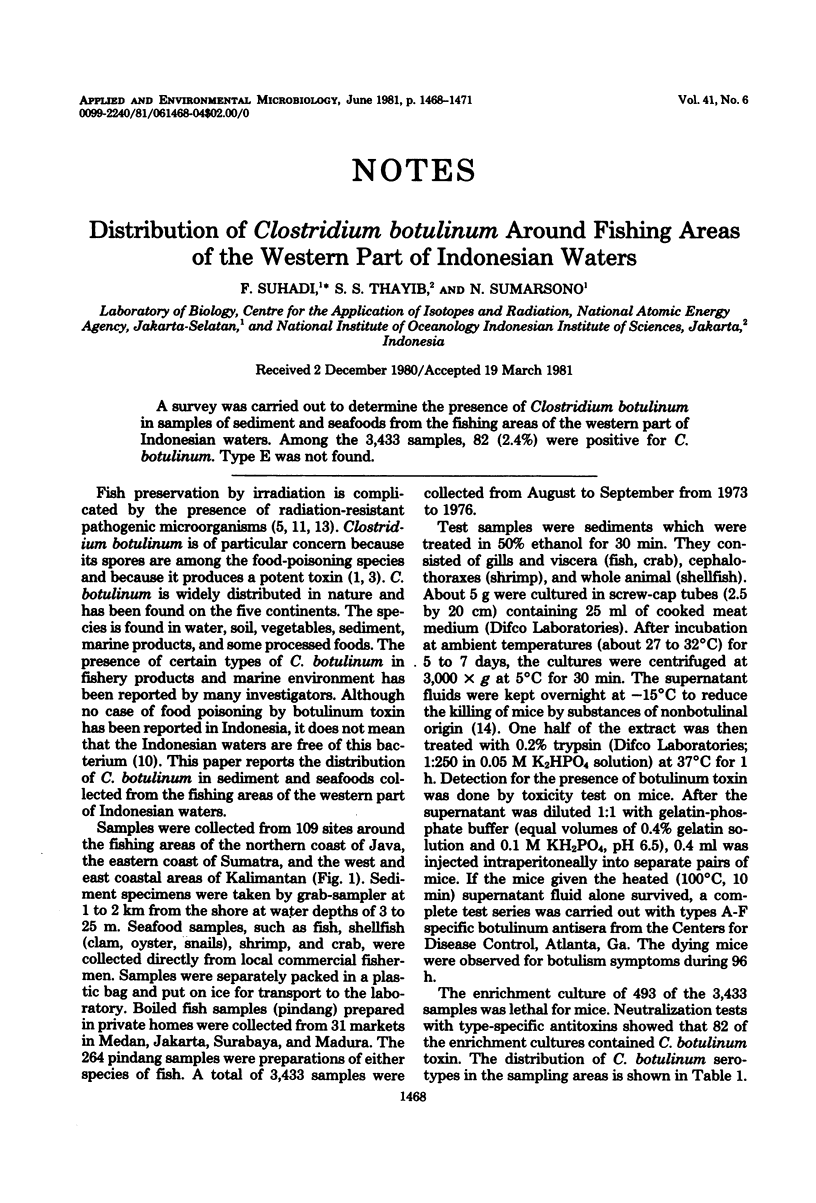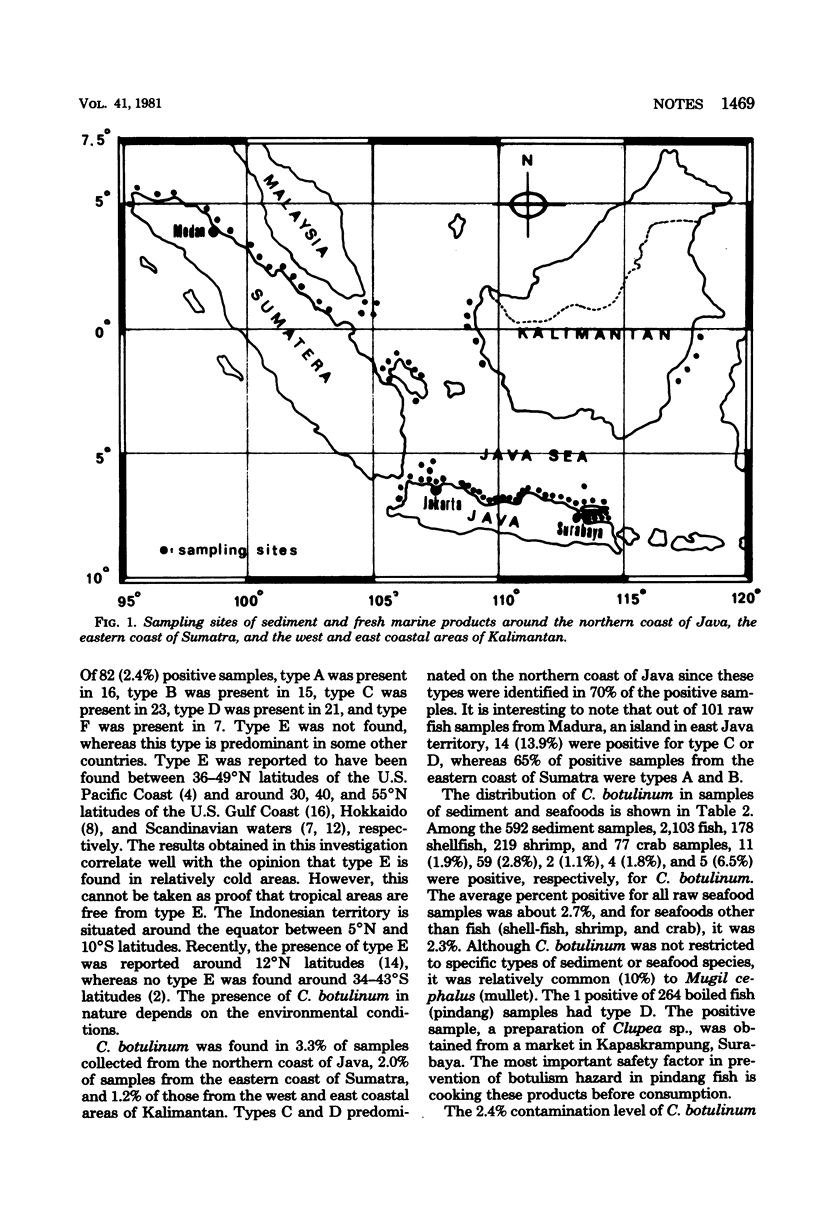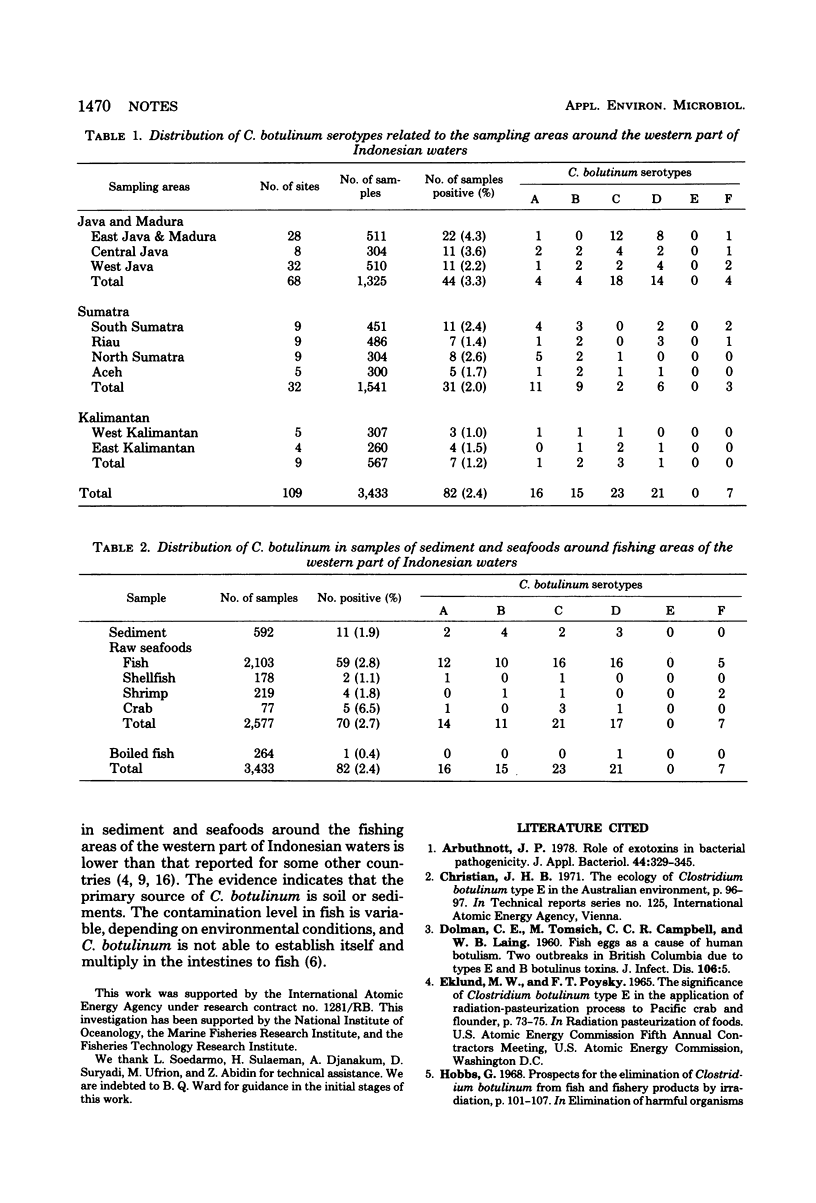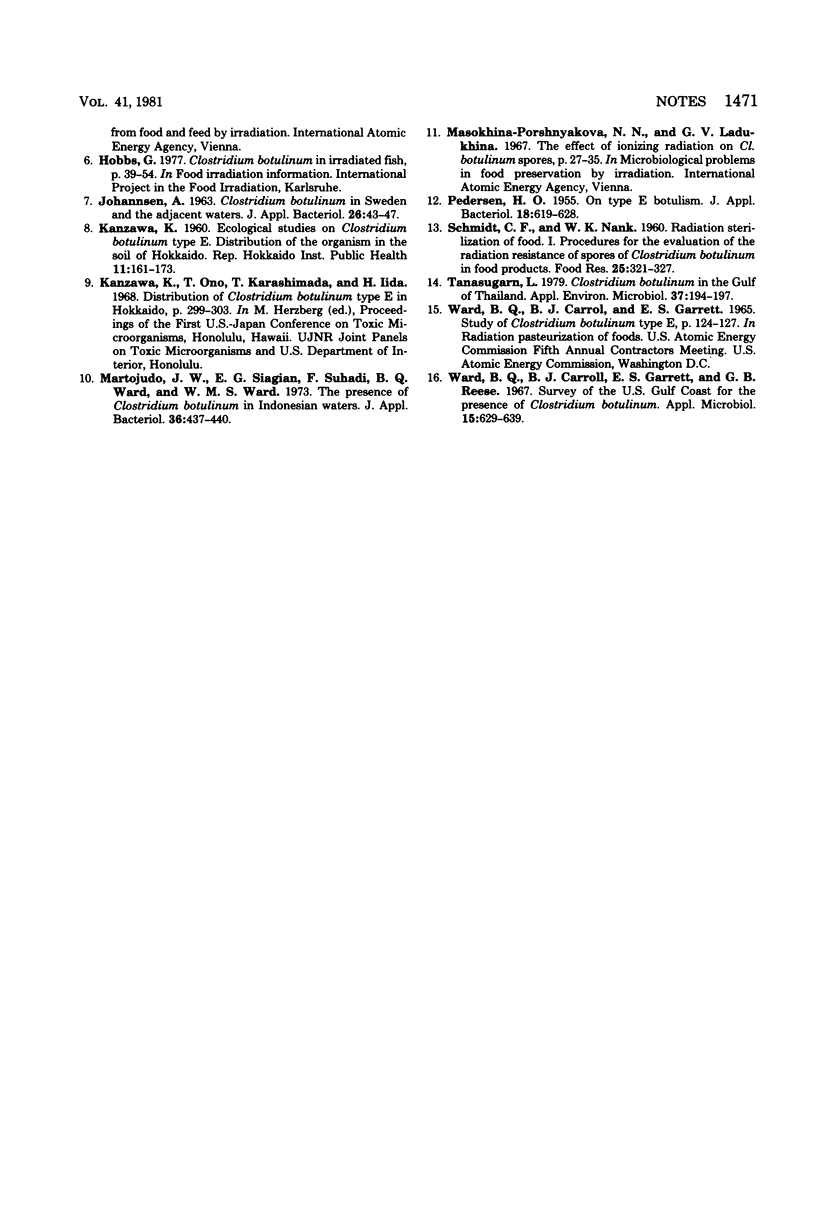Abstract
A survey was carried out to determine the presence of Clostridium botulinum in samples of sediment and seafoods from the fishing areas of the western part of Indonesian waters. Among the 3,433 samples, 82 (2.4%) were positive for C. botulinum. Type E was not found.
Full text
PDF



Selected References
These references are in PubMed. This may not be the complete list of references from this article.
- Arbuthnott J. P. Role of exotoxins in bacterial pathogenicity. J Appl Bacteriol. 1978 Jun;44(3):329–345. doi: 10.1111/j.1365-2672.1978.tb00808.x. [DOI] [PubMed] [Google Scholar]
- DOLMAN C. E., TOMSICH M., CAMPBELL C. C., LAING W. B. Fish eggs as a cause of human botulism. Two outbreaks in British Columbia due to types E and B botulinus toxins. J Infect Dis. 1960 Jan-Feb;106:5–19. doi: 10.1093/infdis/106.1.5. [DOI] [PubMed] [Google Scholar]
- Mortojudo J. W., Siagian E. G., Suhadi F., Ward B. Q., Ward W. M. The presence of Clostridium botulinum in Indonesian waters. J Appl Bacteriol. 1973 Sep;36(3):437–440. doi: 10.1111/j.1365-2672.1973.tb04125.x. [DOI] [PubMed] [Google Scholar]
- Tanasugarn L. Clostridium botulinum in the Gulf of Thailand. Appl Environ Microbiol. 1979 Feb;37(2):194–197. doi: 10.1128/aem.37.2.194-197.1979. [DOI] [PMC free article] [PubMed] [Google Scholar]
- Ward B. Q., Carroll B. J., Garrett E. S., Reese G. B. Survey of the U.S. Gulf Coast for the presence of Clostridium botulinum. Appl Microbiol. 1967 May;15(3):629–636. doi: 10.1128/am.15.3.629-636.1967. [DOI] [PMC free article] [PubMed] [Google Scholar]


